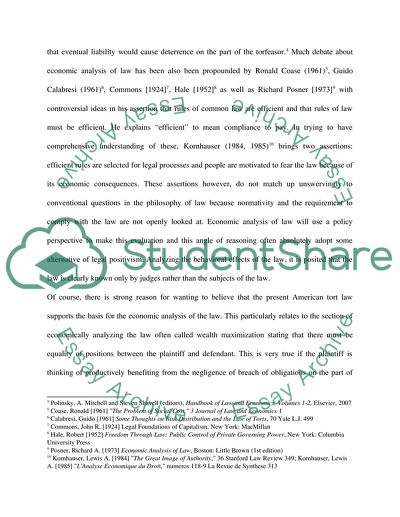Cite this document
(Analysis of the Law of Obligation Using Economic Principles Term Paper, n.d.)
Analysis of the Law of Obligation Using Economic Principles Term Paper. Retrieved from https://studentshare.org/law/1752566-using-economic-principles-analyse-the-law-of-obligationnegligence
Analysis of the Law of Obligation Using Economic Principles Term Paper. Retrieved from https://studentshare.org/law/1752566-using-economic-principles-analyse-the-law-of-obligationnegligence
(Analysis of the Law of Obligation Using Economic Principles Term Paper)
Analysis of the Law of Obligation Using Economic Principles Term Paper. https://studentshare.org/law/1752566-using-economic-principles-analyse-the-law-of-obligationnegligence.
Analysis of the Law of Obligation Using Economic Principles Term Paper. https://studentshare.org/law/1752566-using-economic-principles-analyse-the-law-of-obligationnegligence.
“Analysis of the Law of Obligation Using Economic Principles Term Paper”, n.d. https://studentshare.org/law/1752566-using-economic-principles-analyse-the-law-of-obligationnegligence.


